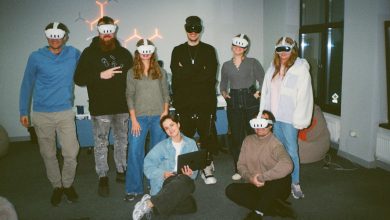
In 2010, it wouldn’t have been unusual for a coding-proficient and bachelor’s accredited individual to more or less just walk straight into a software engineering job, regardless of their manners, or interpersonal and communication skills. In 2024, just over a decade later, the recruitment process and skill expectations for this career look radically different.
With the rise of low and no-code applications, software engineering is one of the tech roles which has been profoundly impacted by GenAI and automation. While coding fluency and technical expertise are still highly desirable qualities that will boost a candidate’s employment prospects, they are now less fundamental to gaining entry into this career than they used to be.
This change has been particularly evident over the last year, as businesses have begun implementing GenAI tools and automation into their operations. According to PractiTest’s 2024 State of Test Automation Report, the proportion of respondents who viewed programming skills as essential for testing has dropped from 50% in 2023 to a minority of 31% in 2024. Meanwhile, the report also finds that skills in ML and AI have tripled over the last year from 7% in 2023 to 21% in 2024.
These findings reflect a radical shift in the skillset requirements for software engineers. They also demonstrate one of the real-world impacts of automation as businesses move beyond the hype of the GenAI boom and into the integration/real-world application phase.
Below, we look at the pros and cons of low-code/no-code applications, and how they are impacting the day-to-day roles of software engineers. We also consider how the expectations and soft-skill requirements for this job have changed over the last decade, and hear from recruiters themselves what the hiring process is really like today.
The pros and cons of low-code/no-code
The main impact of low/no-code applications is that they democratize access to web design and software development. Previously, these were niche areas that were only accessible to software engineers trained in coding, and would often lead to workflow bottlenecks developing within companies. The specialism required for software development tasks has thus been a significant barrier for businesses in carrying out and scaling their digital operations.
So far, the democratization of software development has been a net positive thing for businesses, allowing them to reap the following benefits:
- Reduced costs: low/no-code platforms mean that businesses don’t need to spend so much on hiring software engineers to do basic coding tasks for them. They can also get more ROI from the software engineers they do employ by enabling them to focus on more advanced and profitable tasks.
- Faster development time: low code development platforms reduce the time it takes to build or edit an application by automating several of the component tasks and providing intuitive, easy-to-use tools and suggested templates for various use cases.
Ben Miller, a solutions engineer at Retool, emphasizes the human-centric benefits of low/no-code applications. He points out that they allow software engineers to do more of the interesting, creative tasks, and also enable the engineers to be more holistically involved in the business’ operations.
“These platforms can streamline more straightforward, ’non-innovative’ development tasks like setting up SSO, deployment, and building components, allowing developers to focus on custom business logic and bespoke elements of the software rather than boilerplate code. Enabling developers to focus on customization and tap into AI technology creates more opportunity—and motivation—for them to more deeply understand product and business needs.”
Ben Miller, Solutions Engineer at Retool
Similarly, Robert Salesas, CTO at Leapwork, a software company geared towards automation, views the rise of low/no-code tools as a positive development which is changing the role of software developers to become more focused on innovative and evaluative tasks.
“By leveraging AI to automate repetitive and mundane testing tasks, engineers can pivot their focus towards more strategic endeavours like exploratory testing and test planning. This shift allows them to concentrate on high-value activities that require human ingenuity and critical thinking.”
Robert Salesas, CTO at Leapwork
Miller also points to integrability through preconfigured connectors and APIs as another key benefit of low/no-code platforms.
“Some low-code tools now provide easy interfaces to interact with AI models, making them an efficient way for developers to build tools to interact with LLMs, or to develop AI-powered workflow automations.”
Ben Miller, Solutions Engineer at Retool
On the other hand, there are some downsides and risks to this new trend, as Dr Denise Turley explains in a balanced article in the AI Journal that discusses the impact of the low/no-code revolution. These include:
- Increased security vulnerabilities and data privacy risks: as low/no-code platforms can be used by less qualified developers, there is more risk that the outputs may not meet the security and data privacy standards required by the business or industry.
- Rising technical debt: with a lowered threshold for entry into software engineering, there are concerns that increased reliance on AI-powered tools to do a lot of the work involved in software development will create a technical skills debt, leaving businesses dependent on AI and struggling to find the human expertise they need to maintain and oversee the running of their software systems.
What does being a software engineer look like today?
The rise of low/no-code platforms is changing software engineering from a fundamentally technical role to one that is more focused on the management of software systems. In terms of skills, there has been a shift towards soft skills, which many people in the field view as a positive thing that enables engineers to develop their more ‘human’ skills such as creativity and communication.
“The increase of no-code testing platforms and automation presents an opportunity for software engineers to hone critical and creative thinking skills. According to the [State of Automation] report, communication, problem solving and creativity are considered top skills for testers. This might have been surprising a few years ago, but now, skills typically regarded as ‘soft’ are proving to be incredibly valuable for software engineers, facilitating broader communication.”
Robert Salesas, CTO at Leapwork
Communication in particular has become a key facet of software engineering roles today. More than coding and configuring software systems manually, software engineers are now primarily responsible for overseeing automated software testing systems, and ensure that the outputs are meeting the business’ requirements and goals. This requires collaboration with other teams, communication with the business stakeholders, and a clear understanding of the business’ vision.
Salesas points out that these new management-type responsibilities benefit from the fact that low-code systems are easier for non-coders to understand, which means that they can be more simply explained to a wider team.
“Without the complexity of code, testing is easier to understand, so developers can communicate with stakeholders, product managers, and broader team members, breaking down organisational silos and creating a more integrated approach to software testing.”
Robert Salesas, CTO at Leapwork
On the other side of this, however, comes the issue of explainability for AI model outputs. This is primarily an issue for ML engineers, who are responsible for the development and performance of automated systems including low/no-code platforms.
In conversation with the AI Journal at Weights and Biases’ ‘Fully Connected’ conference last month, CEO Chris Van Pelt highlighted that a key role of ML engineers today involves ‘supervised learning’, i.e. helping a ML model to produce the desired outputs by ensuring that it is being fed the right kind of data. Again, this is a shift from a primarily technical role to one which requires soft skills such as critical thinking, balanced judgement, and awareness of ethical/legal boundaries, alongside technical knowledge of how the data will impact the model’s outputs.
“What supervised machine learning means is that we collect a dataset, let’s say in this example that we collect a whole bunch of images. Some of them are going to be totally fine, but some of them are going to be inappropriate. Traditionally, a human would go in and say – this is fine/this is not fine. There’s a bunch of nuance in these tasks that traditionally would require human judgement. But now, ML models are good enough that they can, for the most part, detect that nuance, and adhere to whatever the requirements are. But most importantly, these [judgement-based] requirements are going to be taught to the machine from the data itself. This means that the engineers need to choose that data very carefully, because any bias in that data is just going to be perpetuated by the model itself.”
Chris Van Pelt, CEO and Co-Founder of Weights and Biases
According to Salesas, the responsibility for AI model health is not unique to ML engineers, but will become a key aspect of software engineering roles more generally. In his view, AI model maintenance and testing will become regular, standard tasks for the modern day software engineer given the importance of model reliability and accuracy.
“Engineers will need to embrace AI testing as a new facet of their role, which comes with unique challenges. These include handling non-deterministic outputs, mitigating biases in training data, and validating decisions made by AI systems. To address these hurdles, engineers must develop new skills and tools, such as generating synthetic test data, implementing adversarial testing techniques, and establishing continuous monitoring and learning mechanisms to maintain AI system reliability, fairness, and precision over time.”
Robert Salesas, CTO at Leapwork
Overall, the role of software engineers today is a far more integrated and varied role than it was a decade ago. This comes with pros and cons, suiting some individuals and personality types better than others. The shift towards a role which involves more managerial responsibilities, oversight, and communication is likely to be reflective of how GenAI and automation is going to impact knowledge worker jobs more generally.
Hiring expectations for software engineers
As the role of software engineering has shifted to become a more varied and integrated one, the expectations and requirements for entry into this role has changed accordingly.
In a retrospective blog post, software engineer Gergely Orosz discusses aspects of software development that have changed, and aspects that haven’t, since 2010. One of the key areas of change that he points to is career development and experience. In particular, he points to the increased training programs, both as bootcamps for initial access to software development roles, and as ongoing mentoring and upskilling initiatives for those already working in the industry.
He also draws attention to the rising standards for diversity and social behaviour in the industry. For example, he points out that in 2010, the tech industry had a huge diversity problem that no-one was talking about. Now, many companies follow social diversity & inclusion protocols to ensure that they are fair employers. Similarly, Orosz notes the decline of what he calls ‘brilliant jerk developers’, i.e. people with exceptional technical proficiency but with non-existent social skills and even antisocial behaviour. Such individuals are now rarer to chance upon due to better management and/or training programs for ‘people skill’ development.
These emerging standards and trends are both impacting, and being impacted by, the hiring process for software engineers. In an interview the AI Journal conducted with software engineering company, Zartis, the team explained that a key focus for their hiring process is finding employees with good people skills as well as technical proficiency.
In particular, CEO Padraig Coffey highlighted that at Zartis, they keep track of even simple things such as good manners and a respectful attitude in the employee’s interactions with not just the hiring team but also other people they might come across, such as the receptionist, a server, etc.
“So we actually ask people to keep an eye on the behaviour of candidates during the hiring process, even small things like the courtesy to show up on time for an interview, if they are kind and courteous in terms of email communication, etc. Even if someone is coming and they’re an incredible technologist, they have to be a good human being fundamentally. And that extends to treating everyone respectfully, and with courtesy”
Padraig Coffey, Zartis CEO
Director of Engineering at the company, Angel Gonzalez, explained that most of the failures/issues the company dealt with arose from human/social problems. In his view, the prevalence of GenAI tools was making pure knowledge less important, given that people can use AI to access this kind of knowledge. This may indicate a shift in hiring practice from assessing candidates acquired knowledge and experience, to assessing their attitude to tasks and creative process – essentially focusing on a candidate’s potential rather than their assessed intelligence or previous experience.
“None of the projects we had failed because of technical reasons. If we fail, it’s because of people, their interactions, their ambitions, and their skillsets. We put a lot of focus on emotional intelligence. Whenever we’re recruiting anybody, it’s not about answering the questions right. I actually say, we shouldn’t really be answering questions anymore. Instead we should be getting candidates to solve problems, to go and use AI to get all the knowledge they want – it’s way quicker than Google. But how you apply it to solve a problem is a totally different thing. Candidates need to show me how they’re getting all these inputs and coming out with a problem’s solution.”
Angel Gonzalez, Engineering Director at Zartis
The attitude to hiring practices exhibited by the executive team at Zartis may not yet be widespread in the industry. However, as more and more emphasis falls on soft skills in software development, more companies are likely to adapt their hiring processes to similarly seek out candidates who have strong interpersonal and collaborative skills, and who demonstrate values which match the company’s.
Interview tips for aspiring software engineers
- Show that you understand not just the technical aspects of software development, but also the real-world impact of the software. In particular, with security vulnerabilities and data privacy risks forecasted to increase from use of low/no-code platforms, employers will be looking for software engineers with a strong holistic understanding of the regulatory and security requirements that are now a major consideration in software development and AI model training.
- Tell the interviewers who you are as a person, not just as a worker. As more emphasis falls on creating cohesive and inclusive teams, more companies may be looking for prospective employees who match not just their technical and soft skills checklist, but also their diversity and sociability checklists.
- Demonstrate your willingness to work alongside AI tools and low/no-code platforms. According to the experts, this is the future of software engineering, and those who are not willing to embrace it risk coming across as uncooperative and lacking in foresight.
- Last but not least, be polite! A smile and a courteous show of respect go a long way to making a good impression in any type of job industry – and as we have discussed in this article – this is becoming increasingly important in software development, with employers now looking for more than just technical expertise.





